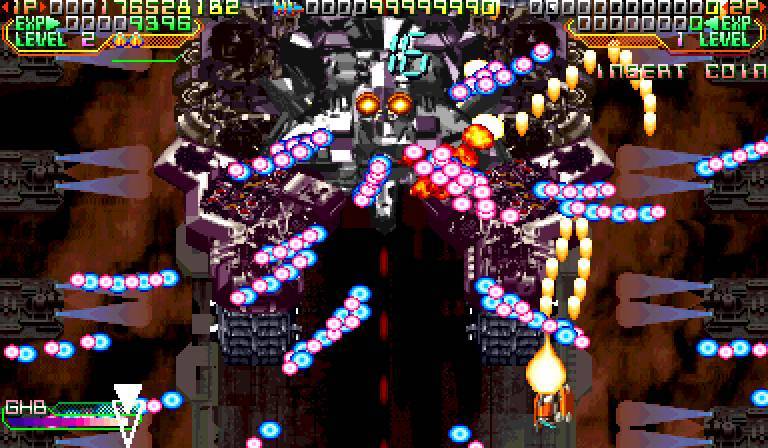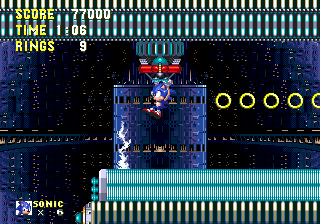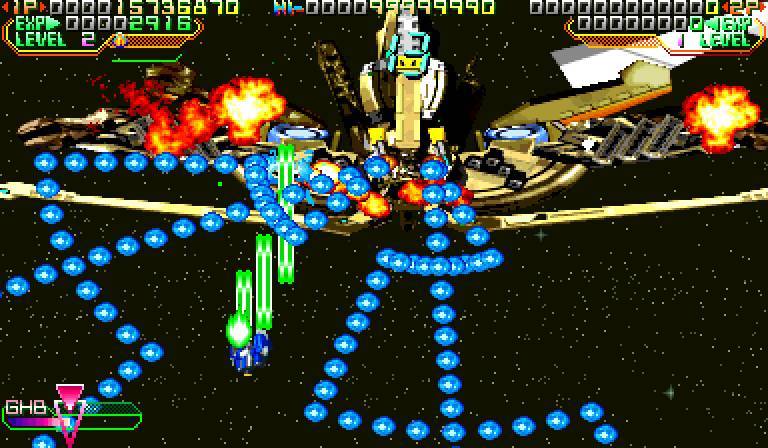This post has not been edited by the GamesBeat staff. Opinions by GamesBeat community writers do not necessarily reflect those of the staff.
Capcom's shoot 'em up Mars Matrix found its way to only one arcade I frequented at the time, and it was never hard to get on the machine. I swear I'm the only guy who played it. When I did, though, I tended to gather the attention of at least one passer-by, amazed I could somehow survive its sea of bullets. My chest puffed out in pride, I didn't have the heart to tell him the game gave you a very powerful survival tool that made trivial all those crazy patterns.
Also the ships were called Mosquitoes. And some of the bullet spreads were insane.

The is the second stage boss. And no, those bullets aren't traveling in the direction you think.
But I'm getting ahead of myself. Mars Matrix was controlled with a joystick and precisely one button.
One.
And what did that one button control?
- Firing basic projectiles.
- Firing a more powerful, short range projectile that needs a moment to charge.
- Activating the Mosquito's bullet absorption.
- Activating the Mosquito's screen-clearing super weapon.
Gadzooks!
Yet, after a very shallow learning curve, it all becomes second nature. Tap the button rhythmically to fire your normal shot — either a spread or a more powerful straight shot, depending on your choice of Mosquito. Stop pressing the button for a moment to let your ship build power, then tap to do the short range power shot. Hold the button for a moment to suck in bullets and render the Mosquito invincible, at the cost of a recharging meter. Finally, keep the button held until you're out of meter to pull this game's equivalent if the quintessential shoot 'em up "bomb."
Truth be told, this system's elegance was overshadowed by one overly effective tactic: using short bursts of the bullet absorption and its associated invincible frames to pass through walls of the rather numerous one-hit-kill bullets, which eats up very little meter, allowing you to repeat the tactic quickly in rapid succession and throw a monkey wrench in the game's carefully crafted enemy placement.

Piece o' cake.
But, although I'm totally okay with multiple buttons where each serves a purpose, and wouldn't dream of condemning any game using more than one by virtue of daring to want multiple actions, there's definitely something to appreciate in a game like Mars Matrix. Letting you do so many things in a game you could technically play on an Atari 2600 controller; what else boasts that?

You win this round Sonic. Too bad it's the last round you'll ever win.
Mars Matrix found a home release on the underrated, ill-fated Dreamcast, sporting one rather peculiar feature; the ability to fire the short range power shot anytime, sans charging, using a second button. And that particular button rapid fired, enabling one to just hold it down while sweeping the top of the screen. Thanks to no deaths via collision with enemy ships, this is sort of like playing Rise of the Triad with cheats, except it's way better than Rise of The Triad because, c'mon, seriously. It's a shame Capcom chose this route, lacking confidence in their own design decision.

This is way better than the NME fight. Slightly fewer missiles too.
Though flawed, Mars Matrix's problems — save the extra Dreamcast buttons — don't stem from its single button controls, an elegant scheme I don't feel gaming has outgrown. There's good reason to use all those buttons on our newfangled modern pads, but the occasional game that reminds us what a single button is capable of can only do us gamers some good, and give us perspective on the medium we love.
Screenshots from GiantBomb's archive.
Carlos Alexandre is a self-described handsome fat man. He ponders his entertainment, and you can find said ponderings on both his website and the podcast he co-hosts.
